Viral Antigens(病毒抗原)
A viral Antigen is an antigen with multiple antigenicities that is protein in nature, strain-specific, and closely associated with the virus particle. A viral antigen is a protein encoded by the viral genome.A viral protein is an antigen specified by the viral genome that can be detected by a specific immunological response.
Viruses are infectious pathogens that cause serious diseases & major threats for global public health, such as influenza, hepatitis, & AIDS. Virus is a sub-micrometer particle that has DNA or RNA packed in a shell called capsid. Viral antigens protrude from the capsid and often fulfill important function in docking to the host cell, fusion, and injection of viral DNA/RNA. Antibody-based immune responses form a first layer of protection of the host from viral infection; however, in many cases a vigorous cellular immune response mediated by T-cells and NK-cells is required for effective viral clearance. When cellular immunity is unable to clear the virus, the infection can become chronic, and serum antibodies to the viral pathogen are used as first indicator for the diagnosis of the disease.
ELISAs provide a valuable tool in the detection and diagnosis of virus infection. The ability to produce recombinant viral proteins will ensure that future ELISAs are safe, specific and rapid. Even when a virus cannot be cultured, provided gene sequence is available, it is possible to rapidly respond to emerging viruses and new viral strains of existing pathogens.
Recombinant viral antigens contain part of viral sequence meaning that the recombinant antigen contains a region which can be recognized by different antibodies produced by different individuals. This reduces the risk of false negatives which can occur with synthetic peptides, which contain only a small portion of the entire protein. If an individual infected with a viral antigen makes antibodies to a part of the protein not included in the synthetic peptides, a false negative results.
Recombinant viral protein usually contains a fusion protein/partner which produces superior attachment to assay surfaces such as wells. For this reason, smaller amounts of recombinant protein will produce the same results as larger amounts of unfused protein. The choice of fusion partner prevents false positives, allowing superior adhesion without incorrect results.
Recombinant Viral proteins are expressed in bacteria, yeast, mammalian cells, and viruses. E. Coli cells were first to be used for this purpose but the expressed proteins were not glycosylated, which was a major drawback since many of the immunogenic proteins of viruses such as the envelope glycoproteins, were glycosylated. Nevertheless, in many instances, it was demonstrated that the non-glycosylated protein backbone was just as immunogenic. The obvious advantage of recombinant viral antigens is that they are available in unlimited quantities and the production and quality control processes is simple.
Advantages of defined using recombinant viral antigens:
1. Production and quality control is simple.
2. No nucleic acids or other viral or external proteins, therefore less toxic.
3. Safer in cases where viruses are oncogenic or establish a persistent infection.
4. Feasible even if virus cannot be cultivated
Disadvantages:
1. May be less immunogenic than conventional inactivated whole-virus vaccines.
2. Requires adjuvant .
3. Fails to elicit CMI.
Facts about Viral Antigens:
1. A Viral Protein Mimics its Way into cells.
2. Viral Protein Helps Infected T Cells Stick To Uninfected Cells.
3. The Viral Protein A238L Inhibits Cyclooxygenase-2 Expression through a Nuclear Factor of Activated T Cell-dependent Trans-activation Pathway.
4. Viral Protein is an effective preventative against ear infection.
5. HIV-1 Viral Protein R Induces Apoptosis via a Direct Effect on the Mitochondrial Permeability Transition Pore.
6. The Level of Viral Antigen Presented by Hepatocytes Influences CD8 T-Cell Function.
7. Antigen-presenting cells from calves persistently infected with bovine viral diarrhea virus, a member of the Flaviviridae, are not compromised in their ability to present viral antigen.
8. There is a difference in the distribution and spread of a viral antigen, development of lesions and correlation between presence of viral antigen and lesions.
9. The absence of viral antigens on the surface of equine herpesvirus-1-infected peripheral blood mononuclear cells is a strategy to avoid complement-mediated lysis.
10. Viral Protein Influences Key Cell-signaling Pathway.
11. A viral protein produced by cancer-causing virus influences a key signaling pathway in the immune cells that the virus infects. This stimulates the cells to divide, helping the virus spread through the body.
12. Protection by recombinant viral proteins against a respiratory virulent avian metapneumovirus has been achieved.
13. Viral O-acetylesterases are found in influenza C viruses and Corona-viruses. Viral O-acetylesterases remove cellular receptors from the surface of target cells which destroys the receptor. Recombinant viral O-acetylesterases derived from Sf9 insect cells as chimeric proteins fused to eGFP specifically hydrolyze 9-O-acetylated sialic acids, while that of sialodacryoadenitis virus, a rat coronavirus related to mouse hepatitis virus, is specific for 4-O-acetylated sialic acid. The recombinant esterases were shown to specifically de-O-acetylate sialic acids on glycoconjugates. The recombinant viral proteins can be used to unambiguously identify O-acetylated acids.
Products for Viral Antigens
- Borrelia(28)
- Chagas(3)
- Chikungunya(7)
- Chlamydia(10)
- Cytomegalo(8)
- Dengue(50)
- Ebola(4)
- EBV(13)
- Encephalitis(8)
- Feline Leukemia Virus(1)
- Hantavirus(1)
- HBsAg(7)
- Helicobacter Pylori(3)
- Hepatitis A(15)
- Hepatitis B(10)
- Hepatitis C(85)
- Hepatitis D(1)
- Hepatitis E(5)
- Herpes(11)
- HERV-K(1)
- HIV(151)
- HTLV(6)
- Influenza(72)
- Lassa(2)
- Malaria(71)
- Mumps(1)
- Mycoplasma(4)
- Norovirus(4)
- Papillomavirus(5)
- Parvovirus(3)
- Rubella(3)
- S. Typhi(5)
- SARS(85)
- Shiga Like Toxin(2)
- Toxoplasma(9)
- Treponema(16)
- Varicella(3)
- West Nile(2)
- Zika(13)
- Cat.No. 产品名称 Information
-
GP25502
New York 3571/2009
Hemagglutinin-Influenza A Virus H1N1 New York 3571/2009 Recombinant

-
GC61879
Nifeviroc
尼非韦罗
Nifeviroc 是具有口服活性的 CCR5 拮抗剂。Nifeviroc 可用于 HIV-1 感染研究。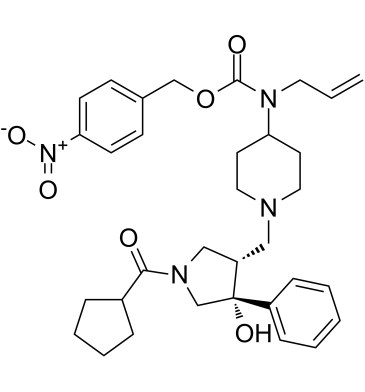
-
GC61134
Nigranoic acid
Nigranoicacid是五味子中分离得到的一种三萜类化合物。Nigranoicacid能抑制HIV-1逆转录酶。在脑缺血再灌注动物模型中,Nigranoicacid通过PARP/AIF信号通路保护大脑。
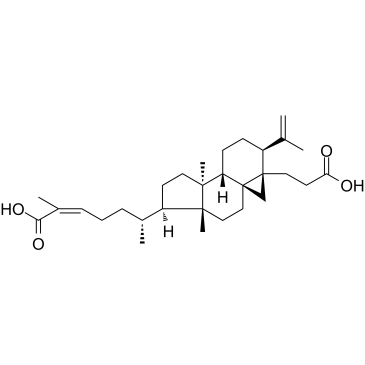
-
GC73971
Nipamovir
Nipamovir是一种硝基咪唑前药。

-
GC47791
Noracronycine
NSC 103005
An alkaloid with antimalarial activity
-
GP25468
Norovirus Group-1
Norovirus Group-1 Capsid Recombinant

-
GP25470
Norovirus Group-1 P-Domain
诺如病毒 Group-1 衣壳 P 域重组体

-
GP25469
Norovirus Group-2
Norovirus Group-2 Capsid Recombinant

-
GP25471
Norovirus Group-2 P-Domain
Norovirus Group-2 Capsid P-Domain Recombinant

-
GC72835
NSC260594
NSC260594诱导细胞凋亡。
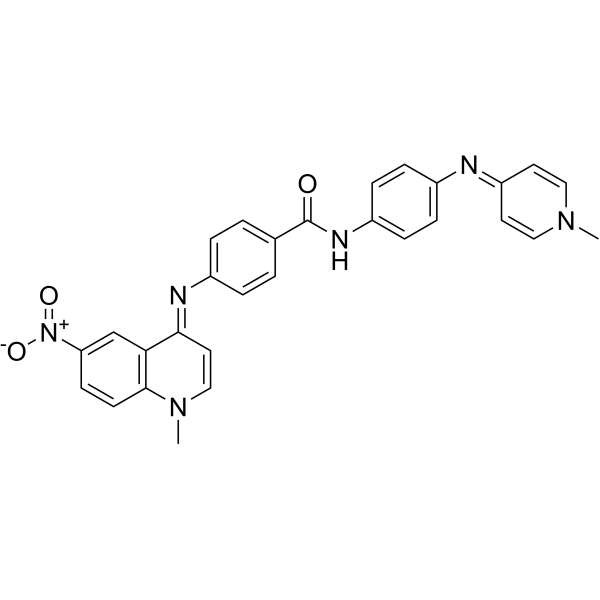
-
GC48801
Nylidrin
脑清
An agonist of β-ARs and antagonist of NR1A/2B subunit-containing NMDA receptors
-
GP24097
Omp Pylori
Helicobacter Pylori Outer Membrane Protein Recombinant

-
GP24100
OmpA S.Enteritidis
肠炎沙门氏菌外膜蛋白-A重组体

-
GC62210
ONX-0914 TFA
PR-957 TFA
A selective inhibitor of the β5i (LMP7) subunit of the immunoproteasome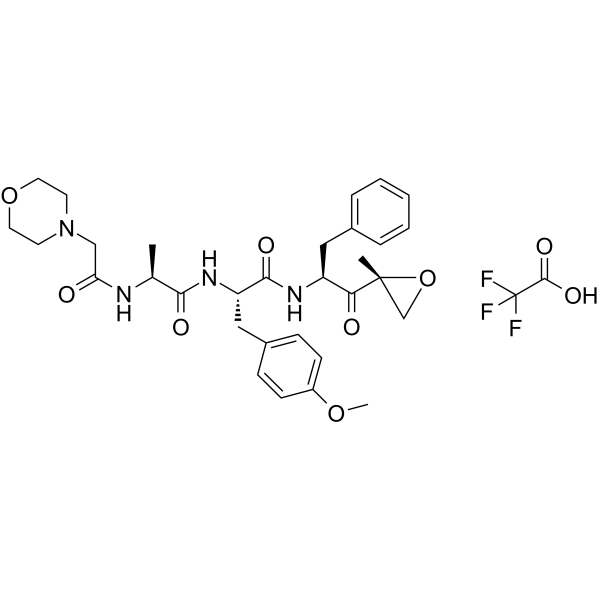
-
GC52041
Oseltamivir Acid methyl ester
奥司他韦酸甲酯
A prodrug form of oseltamivir acid
-
GC91296
p-Carboxyphenyl Sulfate
Benzoic Acid-4-sulfate, 4-Carboxyphenyl Sulfate, para-Carboxyphenyl Sulfate, 4-Hydroxybenzoic Acid Sulfate, p-Hydroxybenzoic Acid Sulfate, para-Hydroxybenzoic Acid Sulfate
一种硫酸化的酚酸。

-
GC92121
P9R (trifluoroacetate salt)
P9R (trifluoroacetate salt)是一种具有抗病毒活性的肽。

-
GC44539
Padanamide A
A bacterial metabolite

-
GP25517
Parainfluenza Type-1
Parainfluenza Virus Type-1

-
GP25518
Parainfluenza Type-2
Parainfluenza Virus Type-2

-
GP25519
Parainfluenza Type-3
Parainfluenza Virus Type-3

-
GP25487
Parvovirus B19 VLP VP1
Parvovirus VLP VP1 Recombinant

-
GP25486
Parvovirus B19 VLP VP1/VP2
Parvovirus B19 VLP VP1/VP2 Co-Capsid Recombinant

-
GP25485
Parvovirus B19 VLP VP2
Parvovirus B19 VLP VP2 Recombinant

-
GC61168
Peldesine
BCX 34
Peldesine(BCX34)是一种有效的,竞争性,可逆和口服活性的嘌呤核苷磷酸化酶(PNP)抑制剂,对人,大鼠和小鼠红细胞(RBC)PNP的IC50分别为36nM,5nM和32nM。Peldesine还是一种T细胞(T-cell)增殖抑制剂,IC50为800nM。Peldesine可用于皮肤T细胞淋巴瘤,牛皮癣和HIV感染的研究。
-
GC61633
Peldesine dihydrochloride
BCX 34 dihydrochloride
Peldesine(BCX34)dihydrochloride是一种有效的,竞争性,可逆和口服活性的嘌呤核苷磷酸化酶(PNP)抑制剂,对人,大鼠和小鼠红细胞(RBC)PNP的IC50分别为36nM,5nM和32nM。Peldesinedihydrochloride还是一种T细胞(T-cell)增殖抑制剂,IC50为800nM。Peldesinedihydrochloride可用于皮肤T细胞淋巴瘤,牛皮癣和HIV感染的研究。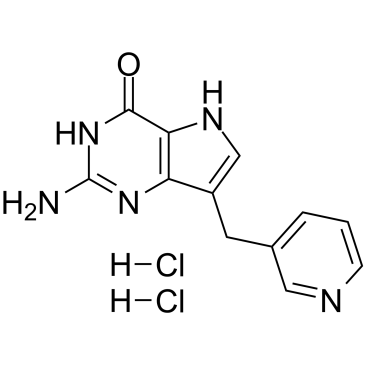
-
GC46198
Penicinoline
An alkaloid

-
GC41584
Penicolinate A
Penicolinate B dimethyl ester
A fungal metabolite with diverse biological activities
-
GC48580
Penicolinate B
Penicolinate A monomethyl ester
A fungal metabolite with diverse biological activities
-
GC61171
Pentosan Polysulfate Sodium (W/W 43%)
木聚硫钠
PentosanPolysulfateSodium是一种口服生物可利用的半合成药物,具有抗炎和促软骨生成的特性。PentosanPolysulfateSodium也是一种有效和选择性的抗HIV药物。PentosanPolysulfateSodium用于间质性膀胱炎的研究。

-
GP25494
Perth 16/09
Hemagglutinin-Influenza A Virus H3N2 Perth 16/09 Recombinant

-
GP25157
PfCs Mosaic
Plasmodium Falciparum Cs Mosaic Recombinant

-
GP25156
PfHSP70
Plasmodium Falciparum HSP70 Recombinant

-
GC49265
PKI (14-22) amide (myristoylated) (trifluoroacetate salt)
Myr-Gly-Arg-Thr-Gly-Arg-Arg-Asn-Ala-Ile-NH2, Myr-GRTGRRNAI-NH2, Myristoylated PKI-(14-22)-amide, PKI-(Myr-14-22)-amide
A PKA inhibitor
-
GC92014
PKN3 Inhibitor Compound 16
Protein Kinase N3 Inhibitor Compound 16
PKN3 Inhibitor Compound 16是丝氨酸/苏氨酸蛋白激酶N3的抑制剂(IC50 = 14 nM)。
-
GC63302
PMEDAP
PMEDAP 是人类免疫缺陷病毒 (HIV) 复制的有效抑制剂。PMEDAP 具有抗小鼠巨细胞病毒 (MCMV) 活性。PMEDAP 是莫罗尼鼠肉瘤病毒 (MSV) 诱导的肿瘤形成和相关死亡率的有效抑制剂。
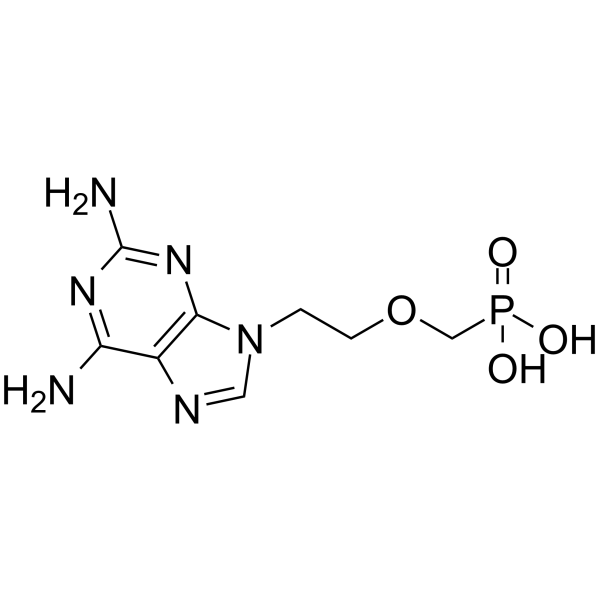
-
GC44679
Prednisone 21-aldehyde/22-hydroxy Prednisone
A mixture of a derivative and an adduct of prednisone

-
GC32186
Puromycin (CL13900)
嘌呤霉素二盐酸盐水合物
Puromycin 2HCl (CL13900) is an aminonucleoside antibiotic, which acts as a protein synthesis inhibitor.
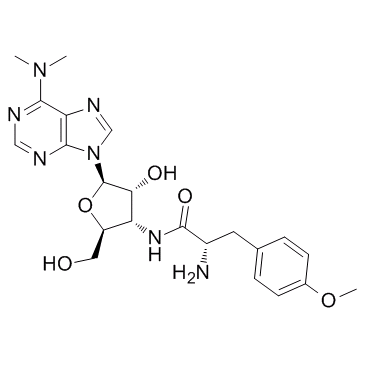
-
GC71227
PYR01
PYR01是一种有效的HIV-1非核苷逆转录酶抑制剂。
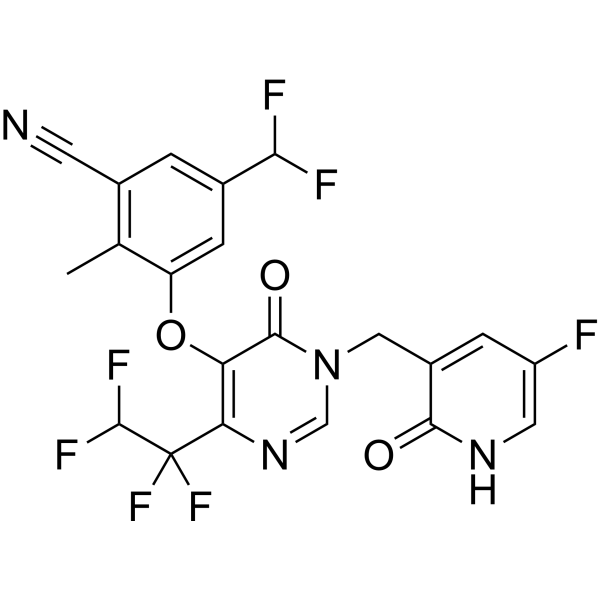
-
GC40568
Pyrocoll
二羰雙吡咯
A bacterial metabolite
-
GC49243
Quassin
苦木素,Nigakilactone D
A quassinoid with diverse biological activities
-
GC61240
Remdesivir O-desphosphate acetonide impurity
瑞德西伟中间体
An intermediate in the synthesis of remdesivir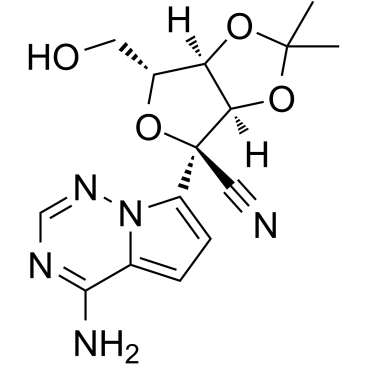
-
GC48036
Remdesivir-d4
GS-5734-d4
A neuropeptide with diverse biological activities
-
GC63523
Reverse transcriptase-IN-1
Reverse transcriptase-IN-1 (Compound 12z),二芳基苯并嘧啶 (DABP) 类似物, 是一种有效的,具有口服活性的 HIV-1 非核苷逆转录酶抑制剂。Reverse transcriptase-IN-1 具有抗病毒活性,对 HIV-1 IIIB,E138K 和 K103N 突变体的 EC50 值分别为 3.4 nM,4.3 nM 和 3.6 nM,而且对 HIV-1 逆转录酶的 IC50 值为 13.7 nM。
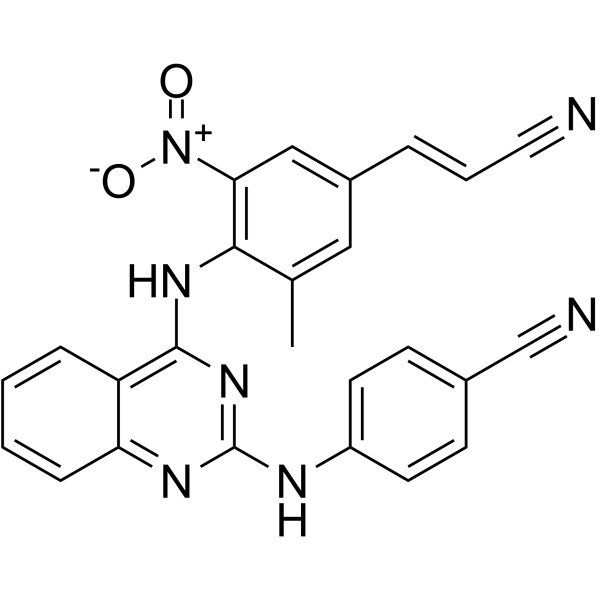
-
GC18659
Ribavirin 5'-monophosphate (lithium salt)
利巴韦林5'-单磷酸二锂盐
A potent, broad-spectrum antiviral agent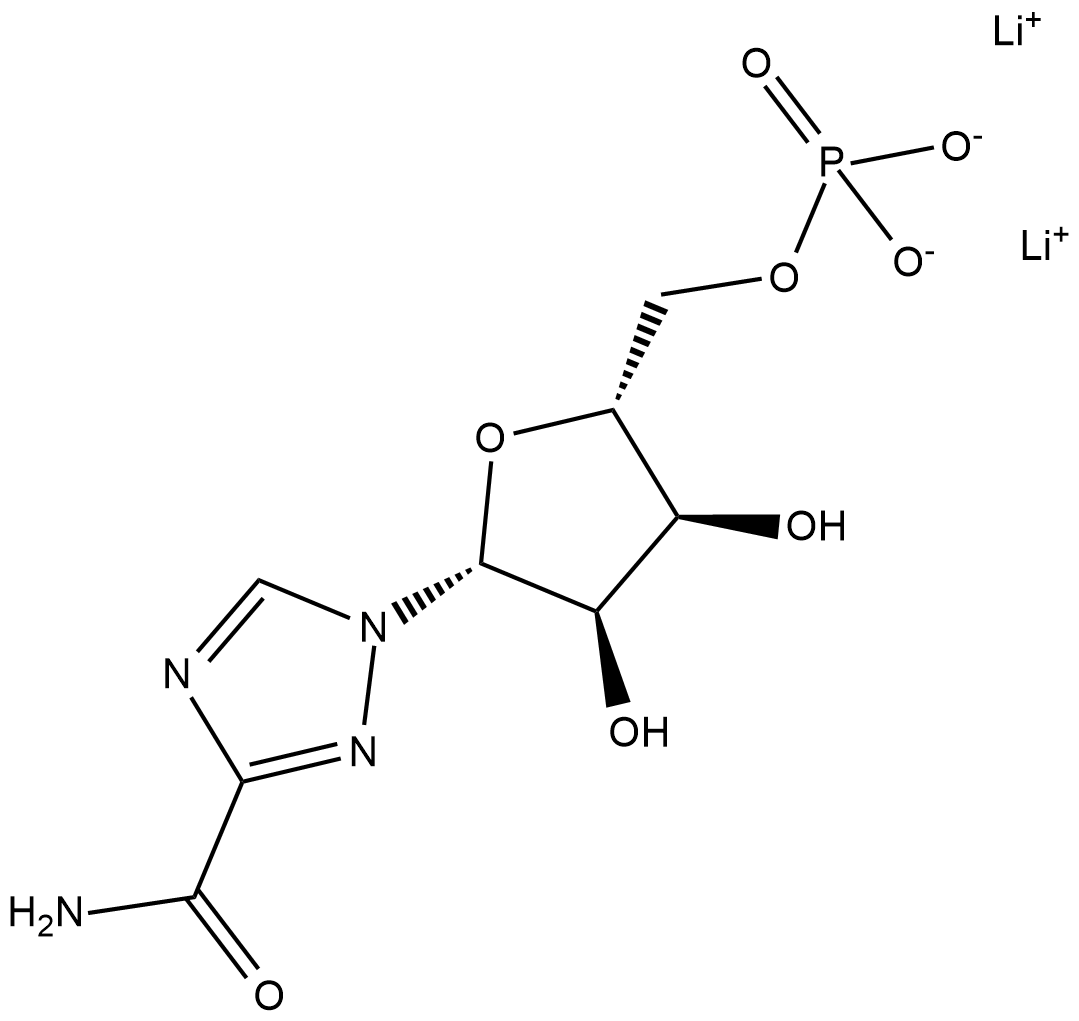
-
GC49395
Ribavirin-13C5
利巴韦林-13C5溶液,100PPM,ICN-1229-13C5
An internal standard for the quantification of ribavirin
-
GC64331
Ritonavir-13C,d3
ABT 538-13C,d3; RTV-13C,d3
Ritonavir-13C,d3 (ABT 538-13C,d3) 是一种 13C- 和氘代标记的 Ritonavir。Ritonavir (ABT 538) 是用于研究 HIV 感染和 AIDS 的 HIV 蛋白酶的抑制剂。Ritonavir 也是 SARS-CoV 3CLpro 的抑制剂,IC50 为 1.61 μM。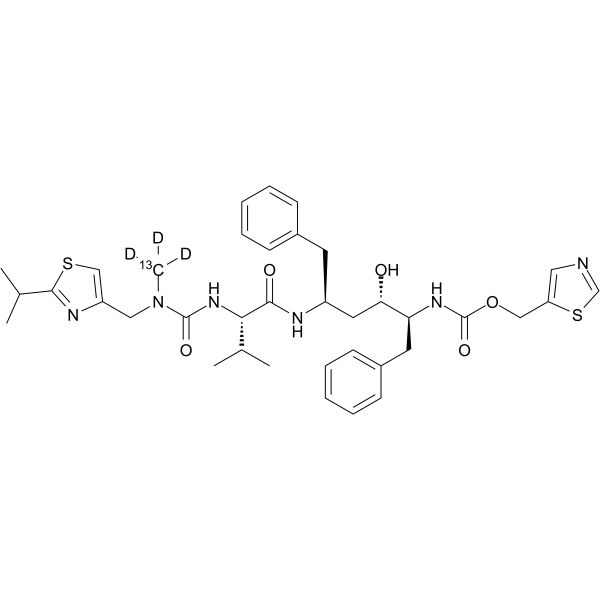
-
GC63979
Ro24-7429
7-氯-N-甲基-5-(1H-吡咯-2-基)-3H-1,4-苯并二氮杂卓-2-胺
Ro24-7429 是一种有效且具有口服活性的 HIV-1 反式激活蛋白 Tat 拮抗剂。Ro24-7429 也是 RUNX1 抑制剂。Ro24-7429 具有抗 HIV、抗纤维化和抗炎作用。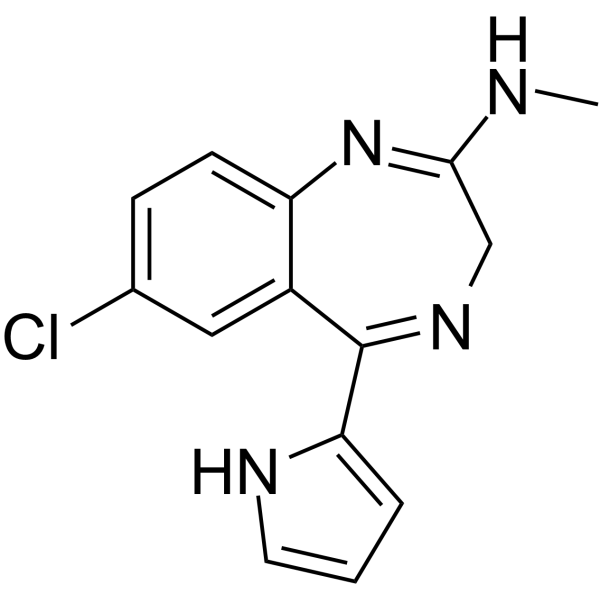
-
GC40022
Roridin E
A trichothecene mycotoxin

-
GP25463
Rubella Capsid
Rubella Virus Capsid C Recombinant





